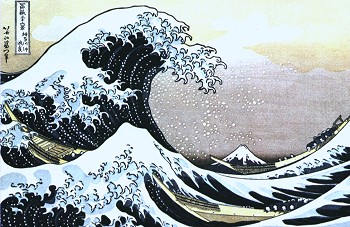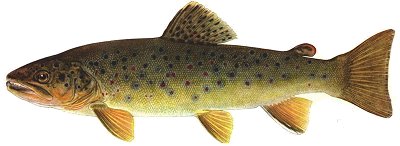Winds & Waves

Winds are named for the direction they blow from, not to. Therefore, a west wind blows out of the west, toward the east.
Waves are created by wind. The factors in the mechanics of wave creation are wind speed and direction and fetch. Fetch is the distance over which the wind acts on the water. The longer the fetch, the greater the wave-building action. Similarly, the greater the wind speed, the greater the wave-building action.
Since our ocean lies to the east of the land, and most diving is done close to shore, a west or north wind will have a very short fetch, while a south or east wind will have a very long one ( the entire Atlantic ocean. ) So a west or north wind is far less likely to produce a rough sea than a south or east one. In fact, a west wind will often act against the incoming deep-sea waves, and blow them down close to shore, making a relatively calm area that a boat can "hide" in on an otherwise rough day.
Waves are classified into two types: wind waves and swells. Wind waves, also known as chop, tend to be relatively steep, and of short period, meaning they are close together, generally about 5 seconds apart. Swells (or rollers) are the large rolling hills of water that you sometimes encounter, even on calm days. Swells tend to have long periods of 8-10 seconds or more but are neither steep nor fast-moving. They often come in patterns, with several small ones punctuated by one or two big ones, then repeat. While wind waves tend to be locally generated, swells come from the deep sea, where they started out as wind waves and coalesced as they traveled. Swells here may be generated by storms off the Carolinas, or even further. Large long-period swells cause surge on the bottom - a back-and-forth motion that tends to stir up sediments and ruin visibility.
Sea conditions will consist of some kind of chop superimposed over the underlying swells, not necessarily moving in the same direction. Sometimes the waves are mostly chop, sometimes mostly swells. If you look at the wave reporting data from the buoys, you can determine this. Of these two types of wave, chop is much more unpleasant, although either will make you seasick if you are prone to it. Therefore, a day with 5-foot seas in mostly gentle swells might actually be better than a day with a nasty 3-foot chop.
Generally, winds below 10 knots from any direction will result in a nice day. 10-15 knot winds from the north or west are tolerable, but from the south or east are likely to result in somewhat rough conditions. Winds of 20-25 knots from the north or west may result in tolerable conditions near shore but not offshore; from the south or east, such winds bring violent 4-6 foot seas. Winds greater than that from any direction will probably result in very bad or even dangerous conditions.
Wave Characteristics & Dive Conditions:
| Height | Period (seconds) | |||
| ( feet ) | 5-6 | 7-8 | 8-10 | 10+ |
| 1-2 | Very Good | Very Good | Very Good | Very Good |
| 2-3 | Good | Good | Very Good | Very Good |
| 3-4 | Fair | Fair | Good | Good * |
| 4-5 | Poor | Poor * | Poor * | Fair * |
| 5+ | Bad * | Bad * | Bad * | Poor * |
* expect bottom surge & poor visibility

